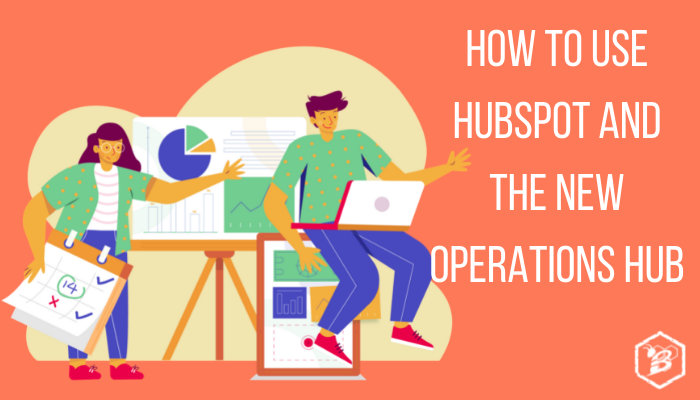If you’re in the HubSpot ecosystem you may have heard that the popular business software company recently dropped a new Hub. Operations Hub had its grand debut in April of 2021. It integrates the powerful automation, data organization, and reporting power that HubSpot is known for in order to easily automate and oversee your entire business process.
From the quality of data you capture at an initial form-fill to the custom-coded actions that power your workflows, Operations Hub gives you a single source of truth to make data-informed decisions about your business operations.
Operations Hub Key Features
There are three key tools that power Operations Hub — Data Sync, Programmable Automation, and Data Quality Automation. Let’s talk about what each tool can do for your business.
Data Sync
One of the biggest frustrations for companies using multiple software services to power your business is data and information happening in software silos. If your tools don’t play well with others, you’re left manually pulling information from one software service into another. This inefficiency may not seem considerable if you’re only talking about an app or two, but that time and hassle grows considerably the more your software stack (and company) grows. It also add the human error component, which we all know can be a killer!
Operations Hub addresses this problem with data sync. Built on the PieSync integration engine and working natively in your HubSpot portal, data sync allows you to manage contacts and data from 25 popular applications. In the future, all native integrations with HubSpot will be powered by this data sync feature.
Default field mappings including properties like name, email, and phone number are included in the free tier of Operations Hub. And further integrations including custom field mappings and filtering are available with Operations Hub Starter or Pro.
Programmable Automation
In your other Hubs, automation is enabled with predefined fields. This is useful for marketing, sales, and service automations that are relatively standard. But it doesn’t work for companies who need unique or custom automation in workflows. Operations Hub solves this problem with custom programmable automation. In workflows, you can use JavaScript to build your own custom actions.
This new functionality with Operations Hub means your imagination (and coding ability) are the limit when it comes to customizing automated actions in workflows. For organizations who are currently limited by pre-defined automation, having the ability to create unique and specific actions can be a game changer.
The use cases with programmable automation can be pretty extensive. Custom-coded actions can provide advanced deal automation, be used to extend data to other applications, and improve or manage your customer data.
Data Quality Automation
The quality of your data can have a big impact on the campaigns, projects, and service you offer to leads and customers. If you’re using inaccurate or incomplete data, you’re working at a disadvantage. With Operations Hub, pre-built data quality automation cleans and unifies your customer data. This feature can take the place of manual data cleanup efforts to standardize your CRM data. With clean, accurate data, you create a single source of truth for your business metrics and customer data.
Pricing for Operations Hub
There are three pricing tiers available for Operations Hub — Free, Starter, and Professional.
- Free: You can get the free tier, you guessed it, completely free with no credit card required. The free tier includes two-way data sync, default field mappings, historical sync, and all third party integrations.
- Starter: For $50 a month you get everything included at the Free tier and custom field mappings in addition.
- Professional: For $800 a month, you get everything at the lower tiers along with programmable automation, webhooks, data quality automation, and additional reporting and workflow functionality.
Getting Started With Operations Hub
Including Operations Hub in your HubSpot stack is an easy addition to make. Hubs are designed to work together, which means you can add Operations Hub into your stack at any point with limited set-up time. Part of the HubSpot onboarding process with any new Hub is ensuring accurate data transfers (particularly if you’re using any other softwares currently to manage your business operations) and getting used to using a new software service in your day-to-day workflow.



.webp?width=100&height=100&name=Evolving%20From%20SEO%20to%20AEO%20How%20SMART%20Agencies%20Are%20Rethinking%20Content%20(1).webp)

